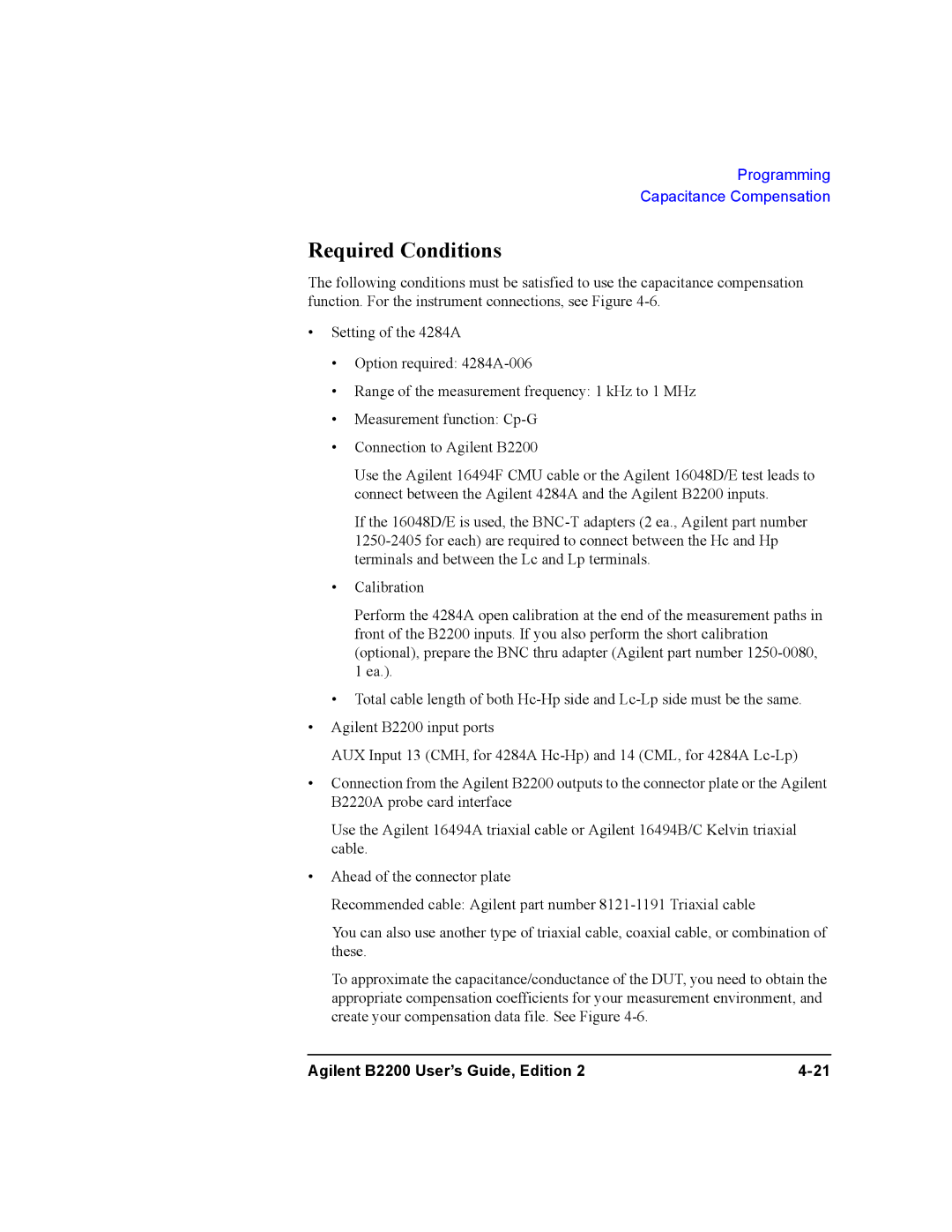Programming
Capacitance Compensation
Required Conditions
The following conditions must be satisfied to use the capacitance compensation function. For the instrument connections, see Figure
•Setting of the 4284A
•Option required:
•Range of the measurement frequency: 1 kHz to 1 MHz
•Measurement function:
•Connection to Agilent B2200
Use the Agilent 16494F CMU cable or the Agilent 16048D/E test leads to connect between the Agilent 4284A and the Agilent B2200 inputs.
If the 16048D/E is used, the
•Calibration
Perform the 4284A open calibration at the end of the measurement paths in front of the B2200 inputs. If you also perform the short calibration (optional), prepare the BNC thru adapter (Agilent part number
•Total cable length of both
•Agilent B2200 input ports
AUX Input 13 (CMH, for 4284A
•Connection from the Agilent B2200 outputs to the connector plate or the Agilent B2220A probe card interface
Use the Agilent 16494A triaxial cable or Agilent 16494B/C Kelvin triaxial cable.
•Ahead of the connector plate
Recommended cable: Agilent part number
You can also use another type of triaxial cable, coaxial cable, or combination of these.
To approximate the capacitance/conductance of the DUT, you need to obtain the appropriate compensation coefficients for your measurement environment, and create your compensation data file. See Figure
Agilent B2200 User’s Guide, Edition 2 |
